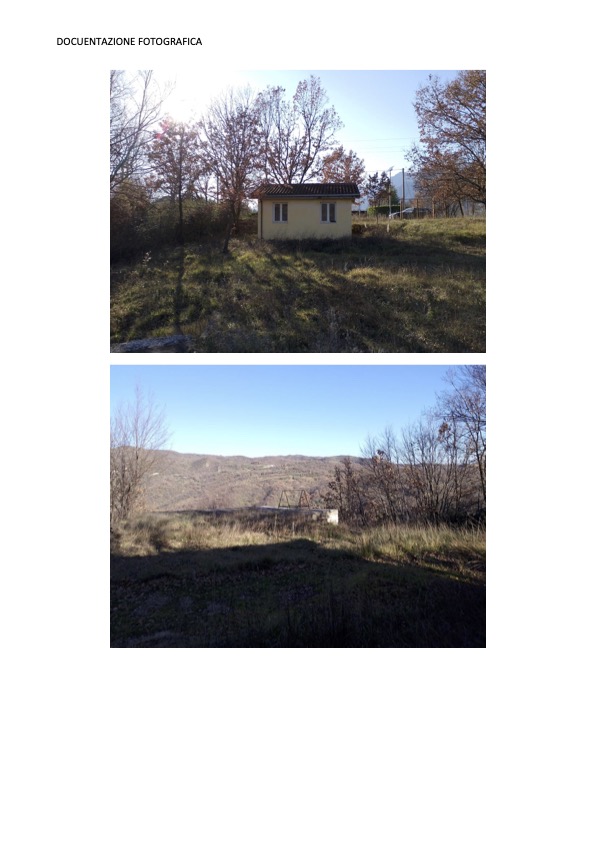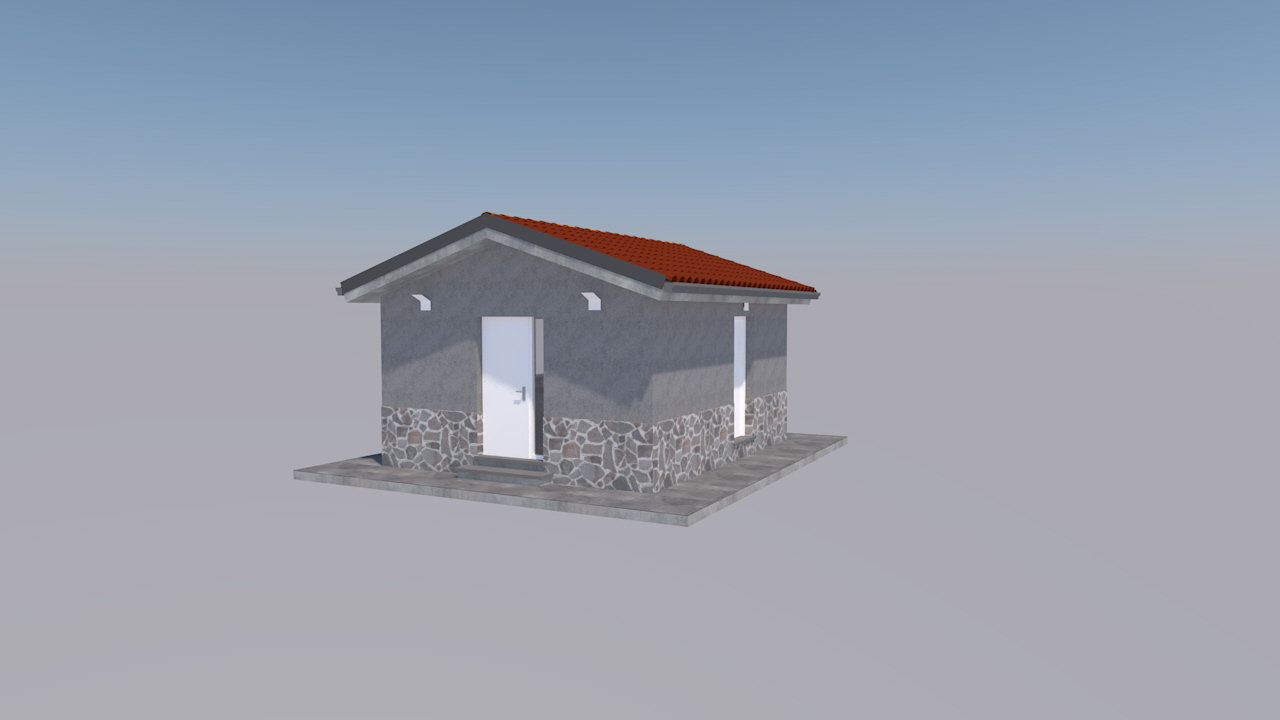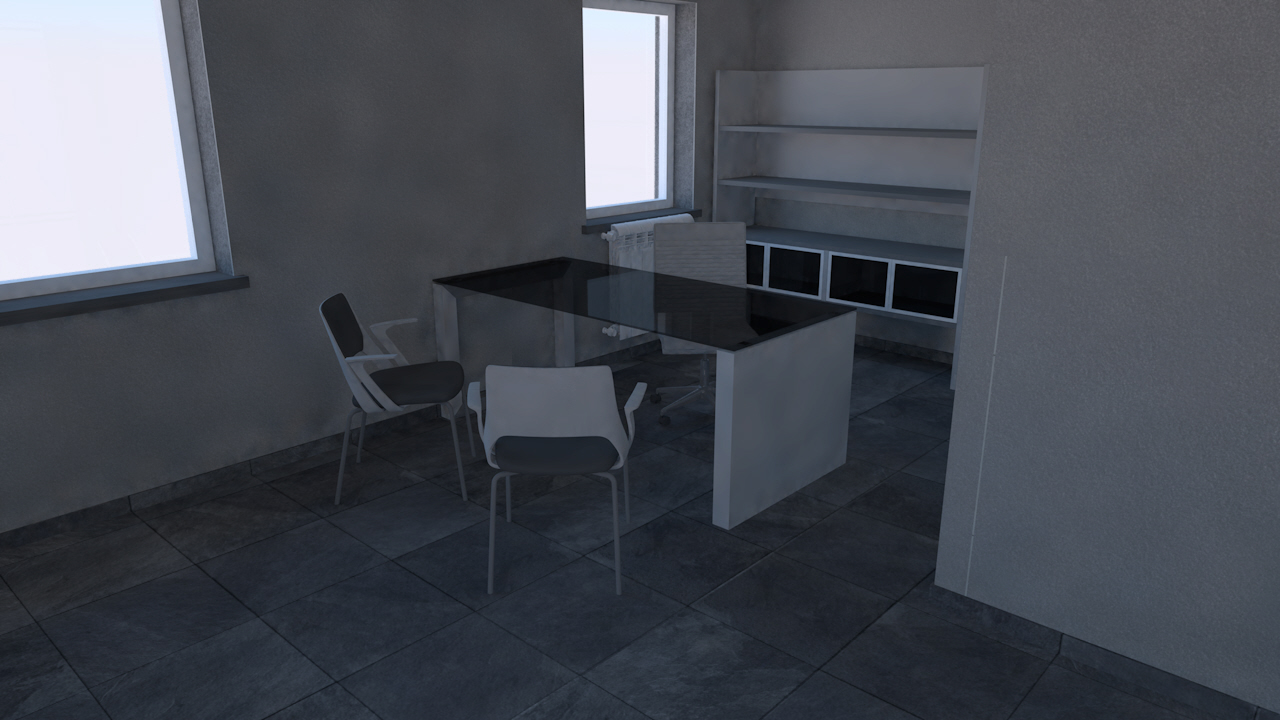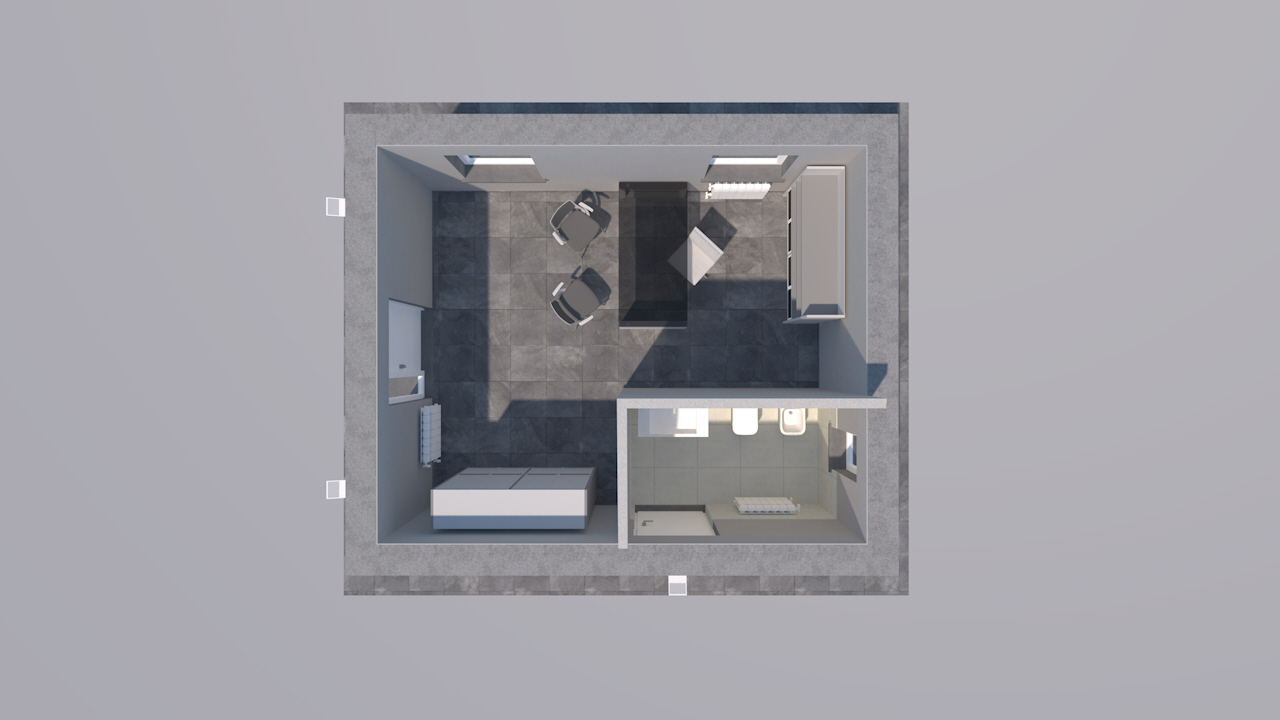Regaining a sense of belonging
Heritage Conservation Tool
Tool for Conservation of Cultural Heritage through Citizens and Young people
The best tool for conservation is the widespread awareness of the cultural heritage. The best custodians, of the Italian cultural heritage are the citizens and in particular the young people.
Italy
Local
ROCCHETTA A VOLTURNO (MOLISE)
It addresses urban-rural linkages
It refers to other types of transformations (soft investment)
Prototype level
No
No
As a representative of an organisation
In line with a participatory process and a multi-level engagement the project aims to create a center of excellence in a very natural landscape in the Molise Region in the south of Italy in which the Municipality will confer to young people, representing a local association, a property building to be renewed in which improve the quality of life of citizens, doing tangible experience and try to build together a sustainable future. Following the NEB principles the youngs could study on how transforming different sectors of the developing territories and their economy in successful quality of life and how to apply the DAVOS Baukulture Quality System in the economic framework of future world changes. The process will be achieved through young's participation in the institutional life being the project done in close cooperation with the municipality and also creating a model for other closing local entities that could reach the project in the near future adding experiences and crossing actions with other projects. This goal will be also realized with the help of a new technological and innovative tool that will be dedicated to the knowledge of the New European Bauhaus programme in the creative dimension of the Green Deal.
BUILDINGS
EDUCATION
YOUNG & CIVIL SOCIETY
SUSTAINABILITY
INNOVATIVE TOOLS
The project is sustainable because it includes the local young population and gives a model to approach a new growth in rural and developing territories. In fact, creating a center in the natural landscape in a developing region of the South of Italy, (Molise Region) the center can become an excellence for all the Region and the South of Italy bringing in the territory the principles of Nature, Creative Dimension, inside a natural landscape, in a trans-disciplinary approach, giving an example on how developing regions can re-make their economic future catching fundamental changes on many levels. This approach also supported by a technological acquisition of worldwide tools for the transnational value chain could connect the South of Italy in a new economic framework also teaching a new way to know and appreciate and consequently practice the new manifesto of the Green Transition. The municipality of Rocchetta a Volturno will act in close cooperation with other municipalities to create a common chain to arise how this natural territory, already famous for some important investments in health (the Neuromed Clinic Center of Excellence) and Universities Exellence Training Center, can preserve the natural aspects also improving the economic development. The project , being a center of knowledge and training can become a position paper starting from the best practice for other regions in the South of Italy.
Aesthetics and quality of experience in the project will work hand in hand to create an environment that people not will find beautiful and also enjoyable, accessible, and meaningful. It’s about balancing form and function to engage users on both an emotional and practical level. The principles to share will be as aesthetics a visual appeal designing elements like color, shape, texture, and composition that will be harmonious and visually pleasing. The overall look should align with the context or purpose of the space, creating a strong first impression. Harmony between elements will ensure a cohesive experience, preventing the design from feeling disjointed or overwhelming. Aesthetic choices will evoke a specific emotional response. Introducing innovative and creative elements can set a design apart from the ordinary, making it more memorable. Uniqueness in aesthetics often enhances people's sense of connection with the design or experience. Designs will consider cultural significance and how certain symbols, colors, or aesthetics might be interpreted by diverse audiences. The experience will be intuitive and easy to navigate. With the digital interface, people will be able to interact with it smoothly without confusion or frustration. The experience will not only be functional but also comfortable. This includes physical comfort, emotional well-being, and minimizing cognitive load, so people feel at ease while engaging with the environment. High-quality experiences encourage participation and engagement. This could mean fostering a sense of involvement or providing opportunities for interaction that enhance personal or social enjoyment. A consistent experience helps reinforce trust and reliability. Tailoring the experience to the individual's preferences or needs will elevate the quality of experience. This might include adaptive design or customizable features that make people feel more in control and connected. (Ex. through storytelling, memorable moments).
The project aims to design systems that are not only functional but also fair, equitable, and empowering. Ensuring that everyone has access to opportunities, services, and decision-making processes, regardless of their socio-economic status, ability, or background for creating a model of inclusive society. For new societal models the project will be truly inclusive, affordable and accessible to all citizens, regardless of their income or socio-economic background. It will create environments (physical, digital, or social) that are usable by people with varying abilities, regardless of age, disability, or technological proficiency. It will ensure everyone can access the necessary information to make decisions providing information in different formats (e.g., Braille, sign language, or translations) and ensuring that it is understandable to diverse audiences. The project will ensure key services for low-income groups or providing financial assistance that will help make essential goods and services available to all preventing financial barriers from excluding those with fewer resources in the participation. The municipality will play an important role in this context.
A sustainable, beautiful, and inclusive project can profoundly benefit citizens in multiple ways, improving both their immediate environment and overall quality of life. When such a project is thoughtfully designed and implemented, it not only meets the needs of today but also creates a lasting positive impact on the community, environment, and economy. The breakdown of how citizens can benefit from each of these aspects: the local economy growth by supporting green technologies, sustainable agriculture, or eco-friendly businesses, such projects can stimulate local economies. This creates new jobs, supports sustainable livelihoods, and ensures that economic growth is environmentally responsible. Citizens, especially those in communities with limited resources, may benefit from lower utility bills, reduced waste management costs, and a more efficient use of natural resources. A beautiful environment—whether through well-designed green spaces, vibrant public art, or visually pleasing architecture—can enhance citizens' mental and emotional well-being. Research shows that aesthetically pleasing spaces reduce stress, improve mood, and encourage social interaction. Beautiful projects can reflect the local culture, history, and identity, fostering a sense of pride and ownership among citizens. When people feel connected to the place they live, they are more likely to engage in its preservation and maintenance. When a project integrates sustainability, beauty, and inclusion, it enhances the overall well-being of the citizens. Finally Inclusive, beautiful, and sustainable projects create a sense of community and belonging. The Association will cover the role with a full engagement to involve civil society.
Engaging stakeholders at various levels in project design and implementation is crucial for ensuring that the project meets the needs of the community, gains broad support, and succeeds in its objectives. Stakeholders can include a wide variety of groups, such as local residents, government officials, business owners, non-profits, subject-matter experts, and others who are impacted by or have an interest in the project. Here’s how stakeholders at different levels can be engaged throughout the project lifecycle:
The engagement method is built organizing open meetings or workshops where community members can voice their opinions, concerns and ideas about the project. Distributing surveys or questionnaires (either paper-based or digital) to gather input on preferences, issues, and priorities from community members Conducting small group discussions with different demographic groups (elderly residents, youth, low-income families) to get deeper insights into their needs and how they will interact with the project. Appointing community representatives or liaisons who are trusted by the local population to ensure communication flows both ways between the project team and community members. Involving citizens directly in the design process by having them collaborate with designers and architects to ensure the project meets their expectations and is inclusive. This has ensured the project addresses the real needs of the people who will use or be affected by it promoting a sense of ownership and buy-in from the community, leading to better support and cooperation. The association has kept local government, policymakers informed through regular meetings or written reports about project progress, challenges, and milestones. This has ensured alignment with broader city or regional goals. Also the private sector stakeholders will play a key role in funding, developing, and implementing projects. Their engagement will be crucial for ensuring the project’s financial viability and technical quality. Forming formal partnerships with businesses will contribute to specific parts of the project, such as building, technology integration, or sustainable practices (green building materials, renewable energy). When construction or other phases of the project require contractors or suppliers, issuing tenders or calls for bids can help attract businesses interested in collaborating on the project. Facilitates collaboration and cooperation between public and private entities to ensure execution.
The project adopted a participatory processes, sustainable, multi-level engagement and beauty combines innovation in several key areas. These elements work together to create a project that is not only forward-thinking but also deeply connected to the community, the environment, and its broader social context. Innovation in the participatory process involves actively involving diverse community members, stakeholders, and even end-users throughout the project’s design and development. The project goes beyond consultation—it empowers people by allowing them to co-create solutions. This has included community workshops, collaborative design sessions, and digital platforms for feedback and ideas. A major innovation is the use of digital tools and platforms to engage a wider audience in the participatory process. Instead of just gathering opinions, the project could incorporate more structured forms of participatory democracy, such as deliberative forums, citizen assemblies, or collaborative decision-making processes. These mechanisms ensure that citizens engage thoughtfully, reflect on issues, and come to consensus-driven outcomes, fostering deeper ownership and a sense of community involvement. The project could combine bottom-up engagement, where local communities actively shape the project, with top-down support, where policy-makers and government institutions provide resources, approvals, and alignment with regional or national goals. This creates a dynamic, two-way flow of ideas and resources that strengthens the project’s foundation. The project might bring together city planners, environmental groups, businesses, civil society organizations, and researchers, creating a holistic approach to its design and implementation keeping people related to their territory and recognizing the belonging.
Creating an inclusive, participatory, and sustainable project requires a holistic methodology that integrates the pillars of the project at every stage from conception to implementation, and beyond. The approach should be flexible enough to address the unique needs of the community while ensuring long-term environmental and social viability. In the preparation phase create a comprehensive list of all potential stakeholders, assess the needs, interests, and concerns of different groups. Align the project with global sustainability frameworks of NEB to ensure that it’s addressing environmental, social, and economic issues in a holistic way. Conduct an environmental impact assessment (EIA) to ensure that the project minimizes harm to the environment and actively contributes to sustainability goals. Integrate principles of universal design to ensure that the space or service is accessible to people of all ages, abilities, and socioeconomic statuses. Ensure communication, signage, and materials reflect the linguistic and cultural diversity of the community. Provide resources in multiple languages and ensure culturally relevant programming. Break the project into smaller phases or stages to allow for flexibility and adaptation based on ongoing feedback. Provide training programs to equip community members with the necessary skills to participate actively in the project, whether through construction, design, management, or ongoing maintenance. This empowers local residents and fosters a sense of ownership. Use sustainable construction practices. Establish and follow environmental management plans to minimize disruption to local ecosystems during construction. Measure the economic and social impacts on the community. Continuously learn from the project’s challenges and successes. Develop models for local ownership, management, and maintenance of the project’s physical spaces or services.
Replicating a territorial sustainable project involves extending the principles, strategies, and successes of an existing project to new locations or contexts while ensuring that the unique characteristics and needs of each area are respected. Successful replication requires careful planning, adaptability, and collaboration across stakeholders. The process generally consists of several phases: understanding the original project, adapting it to new contexts, implementing it, and ensuring long-term sustainability. The project will have a customization: while the project’s core principles remain the same, the design should be adapted to meet the local context. The model once worked it might need to be modified to account for differences in space, climate, or urban density in a new city of the South of Italy, bringing the experience and the result to connect similar territories and involve them in the same process of sustainable development. The possibility of replicating a territorial sustainable project lies in a careful balance of contextual adaptation, stakeholder collaboration, and long-term vision. Successful replication depends on a solid understanding of the original project’s success factors, an ability to tailor the approach to new contexts, and a commitment to participatory processes. By adapting sustainability strategies to meet local needs and fostering broad community and institutional involvement, the project can become a model for positive change in multiple territories, creating lasting environmental, economic, and social benefits. The project will be immediately replicated in the Abruzzo Region.
By developing localized solutions to global challenges, we can address some of the world’s most pressing problems from the ground up. Local initiatives empower communities to take ownership of their future, allowing them to develop practical, adaptable responses that fit their unique needs. As these solutions are scaled or replicated in different contexts, they build a more sustainable, resilient, and equitable world. Local solutions can be the spark for wider change, creating a ripple effect that leads to greater systemic transformation on a global scale. This is the project ambition also to keep inhabitants proud of their belonging and demonstrate this to other similar territories to re-create and re-start a good economy for don't leave their own places. Addressing global challenges with local solutions involves a strategy where locally tailored, context-sensitive interventions are implemented to tackle widespread issues like climate change, or sustainable development. While global problems often seem vast and complex, localized actions can create significant change by directly meeting the needs of specific communities while also contributing to broader systemic progress. This center could be a starting point to develop a long term strategy to bring on more extended territories as a real concept of participatory process, sustainability, multi-level approach, transdisciplinar approach and beauties.
The municipality of Rocchetta a Volturno aims to become a lead partner on the territory of Molise Region, to involve other institutional actors in a participatory process of development to keep population belonging and aware about the sustainability of the territories in which they live. To reach this goal the municipality has given a drive board to youngs' that can lead the young people of Molise Region to a further staying in their countries and Region also becoming a sustainable exemple for other Italian developing regions in the South of Italy. This starting project will help young to believe in their countries and in forms of organization with a bottom-up approach that give them a possibility to be decision makers with the help of experienced governors at the actual stage. The task of the Association will be to grow up participation of other youngs in the knowledge of possibilities and importance of the NEB themes such as a right and evident Green Transition to build together a sustainable futur and transforming different sector of the economy in the South of Italy. Also Improving the quality of life of citizens for don't live and develop the sens of belonging with a tangible experience and a creative dimension to the Green Deal. The task of these young will be to arise, in this new Territorial Center, the fundamental changes at every level in an economic framework that respect environment and lifestyle with innovative a technological tools to be connected to the whole world.










